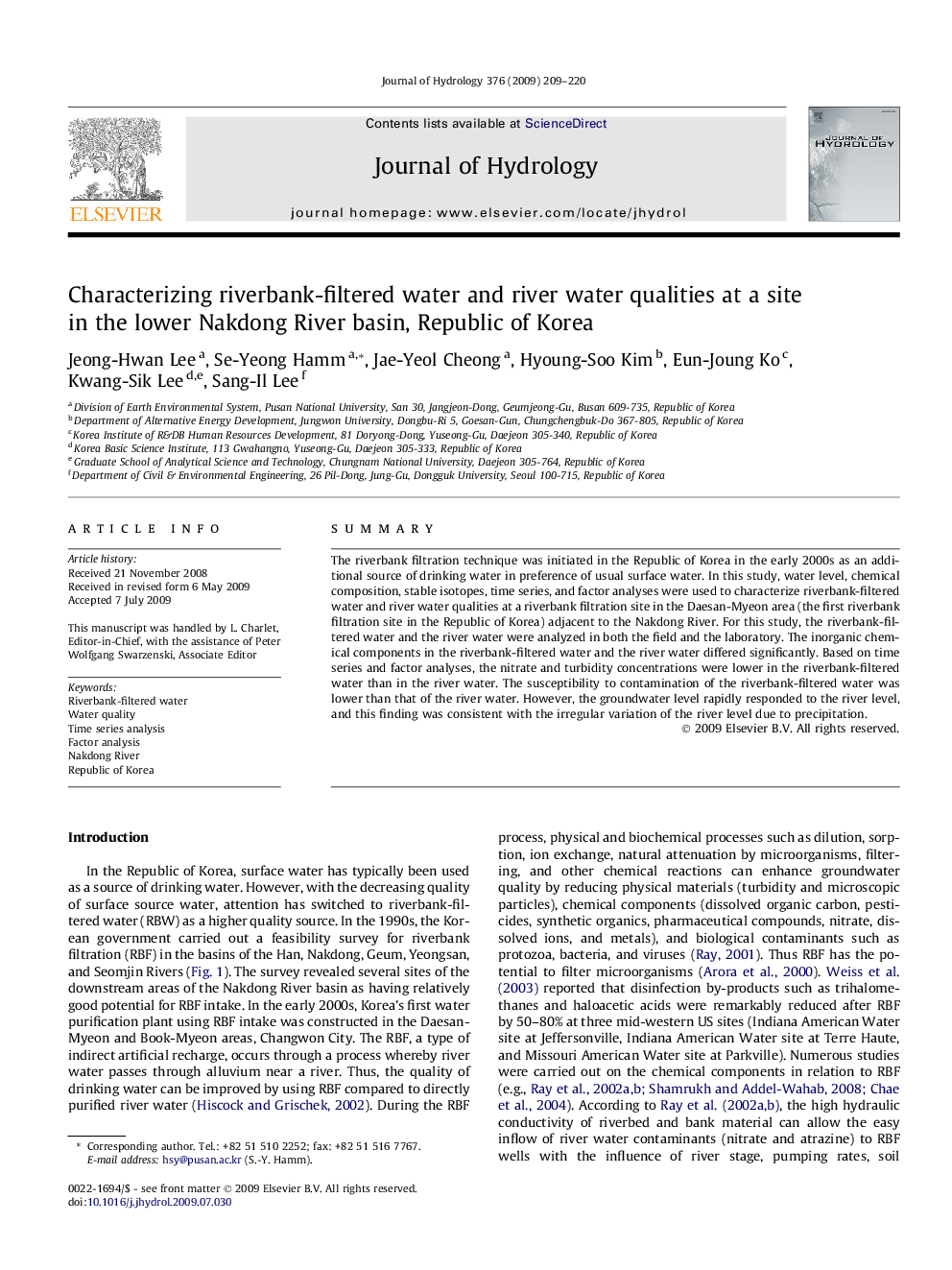| Article ID | Journal | Published Year | Pages | File Type |
|---|---|---|---|---|
| 4578819 | Journal of Hydrology | 2009 | 12 Pages |
SummaryThe riverbank filtration technique was initiated in the Republic of Korea in the early 2000s as an additional source of drinking water in preference of usual surface water. In this study, water level, chemical composition, stable isotopes, time series, and factor analyses were used to characterize riverbank-filtered water and river water qualities at a riverbank filtration site in the Daesan-Myeon area (the first riverbank filtration site in the Republic of Korea) adjacent to the Nakdong River. For this study, the riverbank-filtered water and the river water were analyzed in both the field and the laboratory. The inorganic chemical components in the riverbank-filtered water and the river water differed significantly. Based on time series and factor analyses, the nitrate and turbidity concentrations were lower in the riverbank-filtered water than in the river water. The susceptibility to contamination of the riverbank-filtered water was lower than that of the river water. However, the groundwater level rapidly responded to the river level, and this finding was consistent with the irregular variation of the river level due to precipitation.
